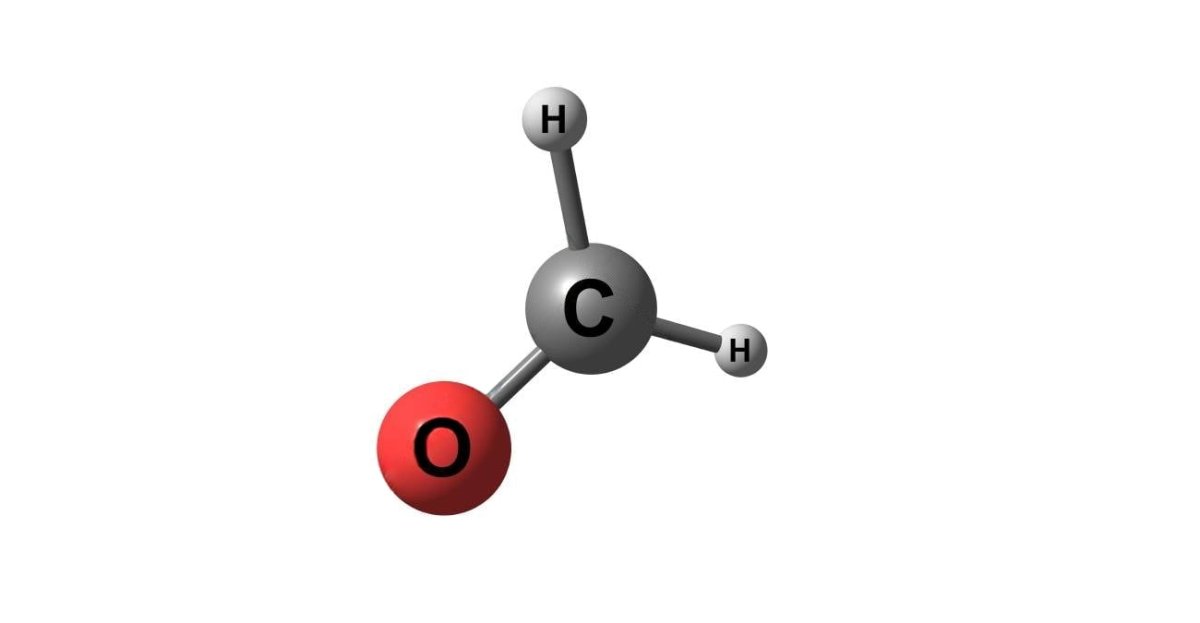Formaldehyde and other harmful chemicals in the textile industry
Not all clothing in our wardrobes is as harmless as it seems. Behind the vibrant colors and perfect fits, there are sometimes far less glamorous chemical substances, starting with formaldehyde. Ubiquitous in our daily lives, this chemical compound is often invisible but can be found everywhere: furniture, adhesives, carpets, textiles. That’s why it deserves attention, especially when it comes to what we wear against our skin every day.
What is formaldehyde?

Formaldehyde: definition
Formaldehyde, simply put, is a Volatile Organic Compound (VOC). At room temperature, it appears as a colorless, flammable, and suffocating gas. However, you might be more familiar with its liquid form: formalin.
Its supposed purpose? To enhance product durability. In the textile industry, it is primarily used during dyeing and finishing processes to make fabrics stiffer, prevent shrinkage, and maintain their colors… Convenient for those who hate ironing.
Where is formaldehyde found?
Formaldehyde is a true chameleon. As mentioned earlier, it is found in furniture, carpets, paints, and textiles. However, it is also present in many other aspects of our daily lives:
- Preservative and disinfectant: Used to preserve products and eliminate microorganisms.
- Building materials and insulation: Found in resins used for particle boards, plywood, and fiberboards.
- Household products: Present in some adhesives, paints, varnishes, wrinkle-free textiles, and paper products.
- Consumer goods: Used as a preservative in medicines, cosmetics, dishwashing liquids, and fabric softeners.
- Agriculture: A component in fertilizers and pesticides.
Formaldehyde is also a byproduct of combustion and certain natural processes. It can be found in:
- Combustion emissions: From unvented combustion appliances like gas stoves or kerosene heaters.
- Cigarette smoke: A common source of direct exposure.
- Wildfire smoke: Increased presence in areas affected by forest fires.
Its widespread use explains its massive presence, but the reality is far less appealing when we consider its health effects.
Formaldehyde: its dangers
Impact on human health
- Potential carcinogen: The WHO has classified formaldehyde as a carcinogen. Not exactly reassuring.
- Irritations: Burning eyes, sore throat, itchy skin—quite the package.
- Allergic reactions: Particularly concerning for sensitive individuals.
Textiles as a direct source of exposure
Textiles are a direct vector of exposure to this substance. Prolonged contact with clothing containing formaldehyde can cause skin irritation and exacerbate issues for sensitive skin or children. Yet, wearing a stylish shirt shouldn’t come with a health warning.
Formaldehyde in the textile industry: a global issue
How is formaldehyde used in textiles?
Formaldehyde is primarily used in two critical stages of textile manufacturing:
- Dyeing: Ensuring colors don’t fade after just a couple of washes.
- Finishing: Helping fabrics maintain rigidity and better structure.
The downside? Environmental impact during production and health risks for both workers and consumers.
Regulations and limits: the European example
Europe is not entirely blind to this issue. European regulations set a maximum limit of 75 mg/kg for clothing to reduce consumer exposure. Outside of Europe, some regions impose little to no regulations, allowing textiles with high formaldehyde levels to enter the European market.
The GOTS (Global Organic Textile Standard) label enforces much stricter criteria, with a maximum threshold of 16 mg/kg. This label provides a safer option for consumers looking to avoid harmful substances.
And at BLUEBUCK?
At BLUEBUCK, all the cotton we use is GOTS-certified. We also conduct regular fabric tests, and most of the time, no detectable traces of formaldehyde are found. In rare cases, only 1 or 2 mg/kg are recorded—levels so low they are nearly undetectable, usually due to accidental contamination during fabric manufacturing.
Want to explore our collection of eco-friendly men’s underwear?

How to reduce exposure to formaldehyde in clothing?
- Choose transparent brands: Look for clothing with certifications like GOTS, Oeko-Tex, or Bluesign, ensuring limited chemical use in production.
- Pay attention to product origins: Textiles from some countries have lower chemical regulations.
- Opt for natural materials: Organic cotton, linen, and wool are safer options, as they are less likely to contain chemical treatments.
- Avoid special-finish fabrics: “Wrinkle-free,” “water-resistant,” or chemically treated fabrics are more likely to contain formaldehyde.
Other harmful chemicals in textiles: a concerning list
Formaldehyde is just the tip of the iceberg. Other chemicals are used in textile production to achieve specific effects, improving appearance or functionality, such as making fabrics water-resistant, wrinkle-resistant, or stain-proof. Some of these substances pose long-term health and environmental risks.
- Phthalates: Used to soften plastics like polyester, commonly found in printed designs on fabrics.
- PFAS (Perfluorinated compounds): Surfactants that protect fibers from grease and moisture, making fabrics water-resistant.
- Alkylphenols: Frequently used in textile processing, containing nonylphenols found in washing and dyeing procedures.
- Toxic dyes: Some banned in Europe are still used elsewhere, potentially causing skin reactions, liver and kidney damage, and suspected carcinogenic effects.
The urgency of collective awareness
Even though Europe and some organizations are implementing concrete actions and warnings, the responsibility also lies with manufacturers and consumers. The fashion industry must face its environmental and health impacts.
It is encouraging to see that awareness is growing, thanks to consumers who increasingly question what their clothes are made of, as well as brands committed to transparency.
Dressing without compromising health or the planet is possible. Formaldehyde is a real hazard, but choosing certified textiles and responsible brands can make all the difference.
